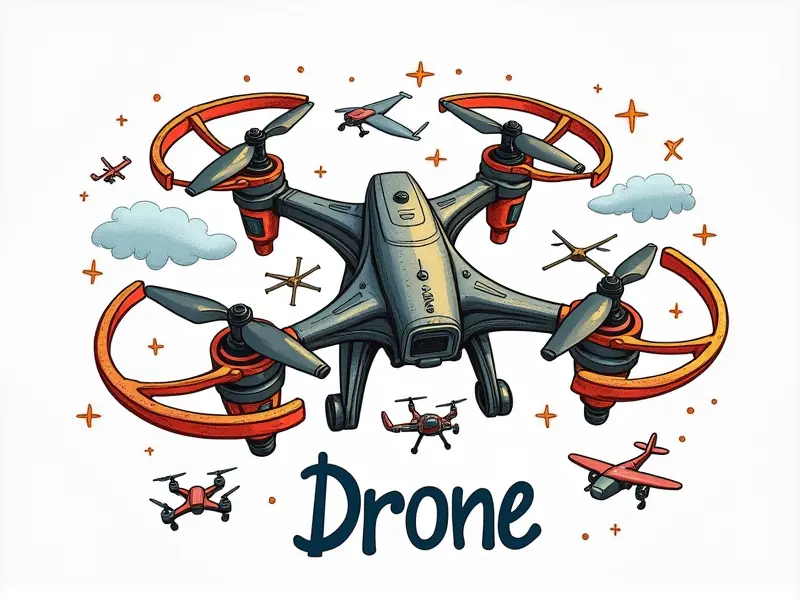What is an RC helicopter?

Everything You Need to Know About RC Helicopters
Remote Control (RC) helicopters have captivated enthusiasts for decades with their intricate design and thrilling flight capabilities. Whether you're a seasoned pilot or just starting out, this guide will provide an in-depth look at the mechanics, flying techniques, and benefits of owning an RC helicopter.
Why RC Helicopters Are a Hobbyist Favorite
RC helicopters stand out among other remote control vehicles due to their unique challenges and rewards. Unlike fixed-wing aircraft or ground-based models, RC helicopters require precise control over pitch, roll, yaw, and throttle to maintain stability in the air. This complexity makes them highly engaging for hobbyists who enjoy problem-solving and mastering new skills.
Beginner's Guide to Flying RC Helicopters
Flying an RC helicopter can seem daunting at first, but with patience and practice, anyone can learn. Start by choosing a beginner-friendly model that comes with built-in stability features or automatic flight modes. Familiarize yourself with the transmitter controls and basic maneuvers before attempting more advanced techniques.
Essential Steps for Beginners
- Select an Appropriate Model: Opt for a helicopter designed specifically for beginners, such as those equipped with gyro stabilization systems.
- Understand the Controls: Learn how to operate the collective pitch and cyclic controls effectively. Practice basic maneuvers like hovering and forward/backward flight in a safe area.
- Practice Regularly: Consistent practice is key to improving your flying skills. Start with short sessions and gradually increase duration as you gain confidence.
Inside the Mechanics of RC Helicopters
The mechanics behind an RC helicopter are fascinating. The core components include the main rotor, tail rotor, swashplate, servos, battery pack, and electronic speed controller (ESC). Each part plays a crucial role in achieving stable flight.
Main Rotor System
- Function: Generates lift and thrust through rotation. The angle of attack can be adjusted to control pitch and roll.
- Components: Includes rotor blades, hub, and pitch links that allow for cyclic and collective pitch changes.
Tail Rotor System
- Function: Counteracts the torque generated by the main rotor to prevent yaw. Adjusts the tail rotor's angle of attack via a servo motor connected to the swashplate.
- Components: Consists of small rotors, pitch links, and control rods that connect to the tail boom.
Swashplate Mechanism
The swashplate is a critical component that translates input from the transmitter into changes in rotor blade angles. It consists of two plates: one fixed and one movable. The movable plate moves up and down (collective pitch) or rotates around its axis (cyclic pitch).
Top Tips for Mastering RC Helicopters
Mastery comes with time, patience, and practice. Here are some tips to help you improve your flying skills:
Fine-Tune Your Technique
- Practice Hovering: Start by mastering the art of hovering in place. This will give you better control over other maneuvers.
- Work on Precision: Focus on making precise adjustments to your controls for smoother transitions between flight modes.
Maintain Your Equipment
- Regular Servicing: Keep all mechanical parts lubricated and free from dirt. Regularly check the battery condition and replace if necessary.
- Calibrate Electronics: Ensure your ESC, servos, and other electronic components are properly calibrated for optimal performance.
The Thrill of Flying RC Helicopters
Flying an RC helicopter offers unparalleled excitement. The sense of accomplishment as you master complex maneuvers is incredibly rewarding. Additionally, the social aspect of sharing your experiences with fellow enthusiasts can enhance the enjoyment even further.
RC Helicopter vs. Quadcopter: Compare
Both RC helicopters and quadcopters offer unique advantages:
Advantages of RC Helicopters
- Precision Control: More precise control over pitch, roll, yaw, and throttle.
- Stability in Windy Conditions: Better stability compared to quadcopters in windy conditions due to the main rotor's larger surface area.
Advantages of Quadcopters
- Simplicity: Easier to learn and operate, especially for beginners.
- Battery Efficiency: Generally more efficient in terms of battery usage compared to RC helicopters.
Best RC Helicopters for Beginners
Selecting the right model is crucial for a positive learning experience. Consider models like the Blade Inductrix F330 or the Heli-Max 15E, which are known for their ease of use and durability.
Essential Tips for Flying RC Helis
To enhance your flying skills, follow these additional tips:
- Join a Local Club: Joining an RC club can provide valuable resources and opportunities to learn from experienced pilots.
- Watch Online Tutorials: There are numerous online tutorials available that cover everything from basic maneuvers to advanced aerobatics.
Understanding RC Helicopter Basics
Gaining a solid understanding of the basics is essential before diving into more complex aspects. Familiarize yourself with key concepts such as collective pitch, cyclic control, and tail rotor function.
RC Helicopter vs. Drone: Differences Explained
While both RC helicopters and drones are remote-controlled flying devices, they differ significantly in design and functionality:
Differences in Design
- Main Rotor vs. Multirotors: RC helicopters rely on a single main rotor for lift and control, whereas drones use multiple rotors.
- Mechanical Complexity: RC helicopters have more mechanical components like swashplates and tail rotors compared to the simpler design of multi-rotor drones.
Differences in Flight Characteristics
- Stability vs. Maneuverability: RC helicopters offer better stability but require more skill for maneuvering, while drones are easier to control and fly but may lack the precision of a helicopter.
- Battery Life: Drones generally have longer battery life compared to RC helicopters due to their simpler design and lower power consumption.
Conclusion
Flying an RC helicopter is a rewarding hobby that combines skill, precision, and enjoyment. By understanding the basics, practicing regularly, and maintaining your equipment, you can master this exhilarating pastime. Whether you're a beginner or an experienced pilot, there's always something new to learn and explore in the world of RC helicopters.
Happy flying!

